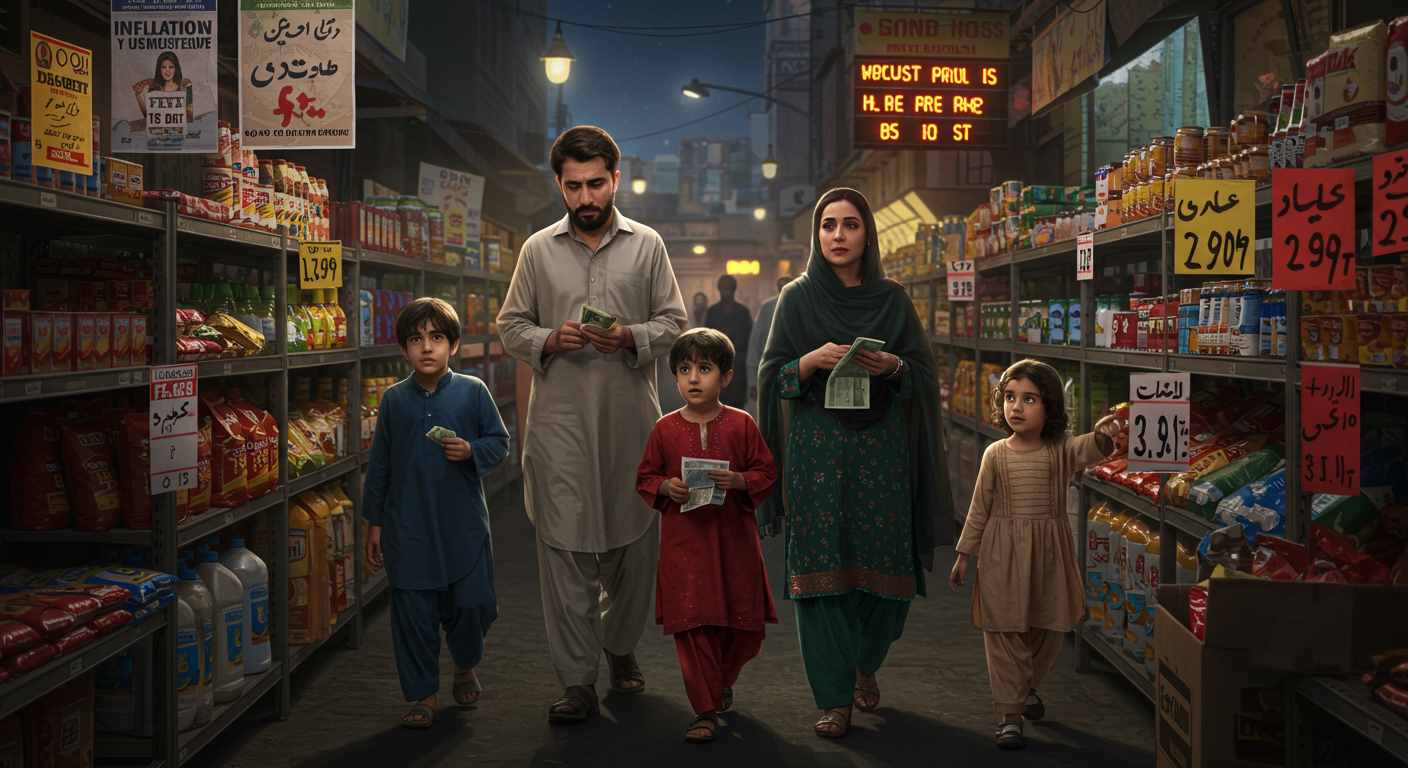Pakistan’s Inflation Crisis Deepens: Soaring Prices Leave Citizens Struggling for Basic Necessities
In what has become a relentless cycle of economic hardship, Pakistan continues to face a severe inflationary storm, leaving millions of citizens battling the rising cost of basic necessities. The soaring costs of essentials like food, fuel, healthcare, and education have left countless families struggling to make ends meet.
According to the Pakistan Bureau of Statistics (PBS), the inflation rate for June 2025 stood at a staggering 26.8%, marking one of the highest year-on-year figures in recent years. This spike is largely driven by surging utility bills, transportation costs, and imported food prices that remain volatile amid global supply chain disruptions.
Ordinary Citizens, Extraordinary Struggles
Muhammad Tariq, a daily wage laborer in Lahore, explains the harsh reality:
“Pehle roti, daal, aur doodh le aata tha, ab to bacho ka pet bharna bhi mushkil ho gaya hai. Mehngai ne kamar tor di hai.”
Households that once managed a monthly budget of PKR 30,000–40,000 now find themselves constantly compromising—cutting down on nutrition, delaying medical treatments, and even withdrawing children from school due to rising tuition fees and transportation expenses.
The price of wheat flour has surged by over 45%, electricity tariffs have jumped due to adjustments in fuel cost charges, and petrol hovers above PKR 300 per liter. The cost of cooking oil, sugar, vegetables, and pulses—items crucial to an average family’s diet—have seen increases between 35% to 60% over the past year.
Root Causes: Domestic and Global Pressures
Economists point to multiple causes behind this inflation crisis:
- Devaluation of the Pakistani Rupee, which continues to trade above PKR 290 against the US dollar.
- Heavy reliance on imports, especially in agriculture, fuel, and pharmaceuticals.
- Increased taxation and removal of subsidies under IMF agreements to meet fiscal reform conditions.
- Persistent political instability, discouraging foreign investment and affecting business confidence.
Dr. Ayesha Naeem, an economist based in Islamabad, says:
“Pakistan is trapped in a cycle of borrowed growth. Unless structural reforms are implemented—especially in agriculture, energy, and taxation—the inflationary pressure will not ease.”
Retailers, Suppliers Also Under Pressure
Not only consumers but also retailers and small business owners are feeling the heat. Wholesale markets in Karachi, Faisalabad, and Rawalpindi report a decline in bulk buying, as shopkeepers struggle to afford new stock. Transportation costs, linked to rising diesel prices, have further worsened logistics and supply chain efficiency.
A shopkeeper in Saddar, Karachi, notes:
“Pehle maal bikta tha, ab log sirf pochte hain aur chalay jaate hain. Dukandaron k liye do waqt ki roti b khani b mushkil ho gai hai.”
Government Measures: Too Little, Too Late?
In response, the government has announced targeted cash transfers, utility store subsidies, and reduction of non-development expenditure, but critics argue that these efforts are either too slow or not wide-reaching.
Pakistan’s Finance Minister, Muhammad Aurangzeb, recently issued a statement through a press release, where he mentioned that:
“We’re committed to protecting vulnerable groups, but we must also stabilize the economy. Inflation is our top priority.”
However, public trust remains low, and skepticism grows as previous relief promises have fallen short or remained inaccessible due to red tape.
Conclusion: A Long Road Ahead
As inflation eats into the purchasing power of the average Pakistani, the fear of widening inequality and deepening poverty looms large. Without meaningful and inclusive economic reforms, the cycle of inflation, poverty, and frustration may continue—leaving millions with little hope for economic recovery in the near future.
